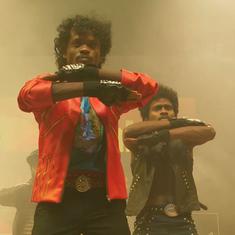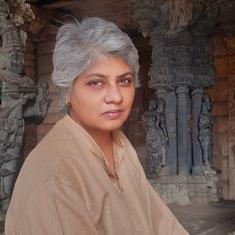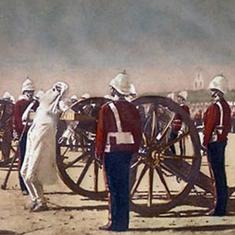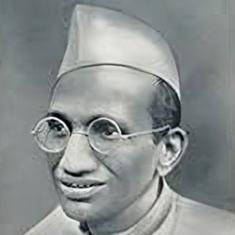There are several among us who fantasise about dying for love. This explains the allure of tragic love stories such as Romeo-Juliet, Laila-Majnu, Sassi-Puno, Mirza-Sahiban, Sohni-Mahewal, Shirin-Farhad and Devdas-Paro, which have inspired writers, musicians, playwrights and filmmakers many times over. Devdas has gone through several iterations, as has the tale of Anarkali, the legendary dancer in the Mughal Emperor Akbar’s court, who is said to have had a doomed affair with his son, Salim. As the story goes, Akbar had Anarkali arrested and entombed.
Historians are divided on whether Anarkali existed in the first place and, if she did, whether the tomb in the Punjab Secretariat compound in Lahore is actually hers. Whatever the truth, Anarkali has proved to be a muse for countless writers and filmmakers. As early as 1922, Urdu dramatist Imtiaz Ali Taj explored the legend in a play. The theme of forbidden love between Anarkali and Salim and Akbar’s enraged response has formed the basis of most of the movies made subsequently.

The first screen adaptation was produced in the silent era. Two films were released in 1928, Loves of a Mughal Prince and Anarkali. While Loves of a Mughal Prince, featuring Seeta Devi as Anarkali, was produced by The Great Eastern Film Corporation and directed by Charu Roy and Prafulla Roy, Anarkali was directed by RS Choudhury and produced by the Imperial Film Company. It starred India’s leading star at the time, Sulochana (real name Ruby Myers). Anarkali was one of Imperial’s biggest successes, and is considered one of Sulochana’s best-known movies. She appeared in two more Anarkali films, the first of which was a profit-spinning talkie version in 1935 and directed once again by Choudhury.
It is easy to see why the Anarkali story has stirred the imagination. It has all the ingredients for spectacle, romance and drama: a forbidden and rebellious love story, royal intrigue against the backdrop of the splendour of the Mughal court, jealousy, betrayal, a high-voltage clash between father and son, and a tragic ending that takes the story and its lead players to mythic heights. The scope for romance, poetry and songs is immense and music, unsurprisingly, has been a highlight of the talkie versions.

In the version made in 1953, Sulochana plays Rani Jodhabai, Salim’s equally mythical Rajput mother. Produced by Filmistan, directed by Nandlal Jaswantlal and starring Pradeep Kumar as Salim, Anarkali was a box-office hit. It had fine performances by Bina Rai in the titular role, Mubarak as Akbar, and Kuldip Kaur as the scheming courtier out to thwart the dancer.
The movie is remembered today mostly for C Ramachandra’s incredible score (one of the tunes is by Basant Prakash) and represents some of the finest singing of Lata Mangeshkar’s career. The piece de resistance is Yeh Zindagi Usi Ki Hai, sung by Mangeshkar in two versions, one at the beginning to establish the romance and the other at the end as Anarkali is buried between two walls.
The legend of Anarkali and the success of the Filmistan production led to a big-budget Telugu version in 1955. This film, also named after its talismanic heroine, stars Telugu-Tamil star Anjali Devi as the courtesan. Telugu cinema’s iconic romantic hero, A Nageshwara Rao, plays Salim.
The film was co-produced by Anjali Devi along with her husband, P Adinarayana Rao, who also composed the music. The songs, sung by Ghantasala, Jikki and P Susheela, were extremely popular. As was the common practice during those years, the film was dubbed into Tamil the same year with the same title.
When India was so enamoured by Anarkali, why should Pakistan have been left behind? Lollywood, the popular term for the Pakistani film industry based in Lahore, presented its version in 1958. Possibly the most faithful adaptation of Imtiaz Ali Taj’s play, the Urdu-language Anaarkali saw “Melody Queen” Noor Jehan in the lead role, with Sudhir playing Salim and the great character actor Himalaywala as Akbar.

The Pakistani production doesn’t match up to its Indian counterparts in terms of scale, probably due to budget constraints, but one can’t fault its musical score by Inayat Hussain and Rashid Attre. Noor Jehan’s melodramatic central act does not hold up well today, but her voice is in fine form. However, unlike other versions, this one did average business at the box office.
The best was still to come. And it did in 1960 with the release of K Asif’s labour of love and magnum opus, Mughal-e-Azam. The film’s history stretches back to pre-Partition India, and was first launched with Nargis, Sapru and Chandramohan as Anarkali, Salim and Akbar. The roles were finally played by Madhubala, Dilip Kumar and Prithviraj Kapoor.
Mughal-e-Azam was easily the most expensive Indian film until then. It was made for Rs 1.5 crores and filmed over 500 days. In a bid to be as realistic as possible, Asif spared no expense. Tailors from Delhi stitched the costumes, Hyderabadi goldsmiths made the jewellery and Kolhapur craftsmen the crowns, Rajasthani ironsmiths fabricated the shields, swords, spears, dagger and armour, specialists from Surat-Khambayat were employed for the exquisite zardosi embroidery on the costumes, while the elaborate footwear was ordered from Agra.

Asif’s extravagant version differs from the others. His Akbar spares Anarkali’s life by letting her escape through a secret tunnel, unbeknownst to Salim.
Everything about Mughal-e-Azam screams opulence. The epic battle sequences, the grandeur of the Mughal court with its famous Hall of Mirrors, the deliriously romantic love scenes between Salim and Anarkali, and the face-off between Salim and Akbar all come together to create one of the finest Indian films ever made. Mughal-e-Azam contains Madhubala’s greatest performance, and she proved that she could be a fine actress when given the opportunity. The other great performance in the movie is by Durga Khote as Jodhabai, who is torn between her son and husband. Despite her brilliance, Madhubala lost the Filmfare Award for Best Actress in 1960 to the older Anarkali, Bina Rai, in Ghunghat. Even Naushad came out on the losing side to Shanker-Jaikishen for their populist tunes in Dil Apna Aur Preet Parayi.
One of Mughal-e-Azam’s highlights was getting the great classical vocalist Bade Ghulam Ali Khan to lend his voice to two songs, Prem Jogan Ban Ke and Shubh Din Ayo. The former is used in one of Indian cinema’s most erotic scenes, the white feather sequence.
Another director who wanted to film the legend was Chetan Anand. He first conceived the project in the 1970s as Salim-Anarkali with his muse, Priya Rajvansh, as the courtesan and the then rising star, Amitabh Bachchan, as Salim. The music was to have been scored by Madan Mohan, but he died in 1975 while working on the soundtrack. Anand subsequently shelved the film. He tried to revive it in the 1990s as Mallika-e-Hind with Madhuri Dixit, but this project too did not take off.
Apart from movies, the Salim-Anarkali saga has inspired theatrical performances, portions of song sequences and spoofs, including the Tamil film Illara Jyothi (1954), Chashme Buddoor (1981), Chameli Ki Shaadi (1986), Maan Gaye Mughal-e-Azam (2008) and most recently, Ready (2011). The affair between the prince and the courtesan may have been doomed, but their romance lives on.










